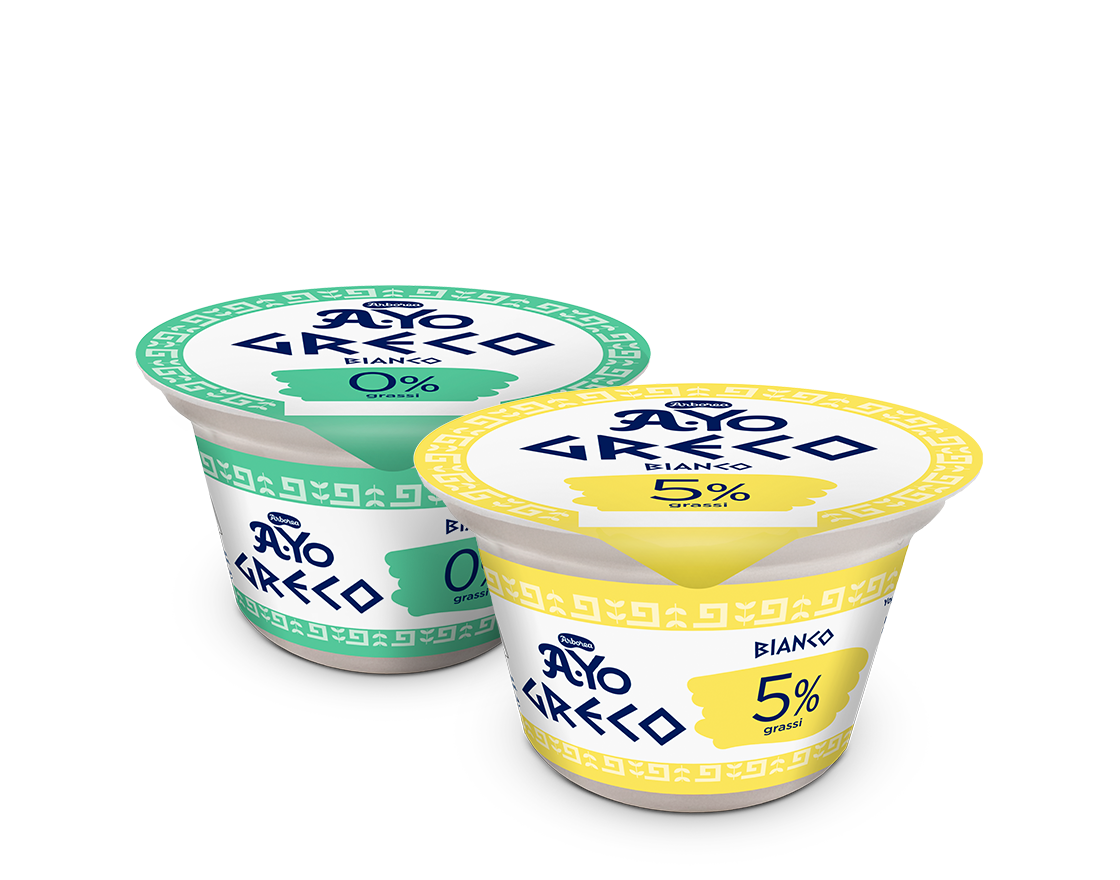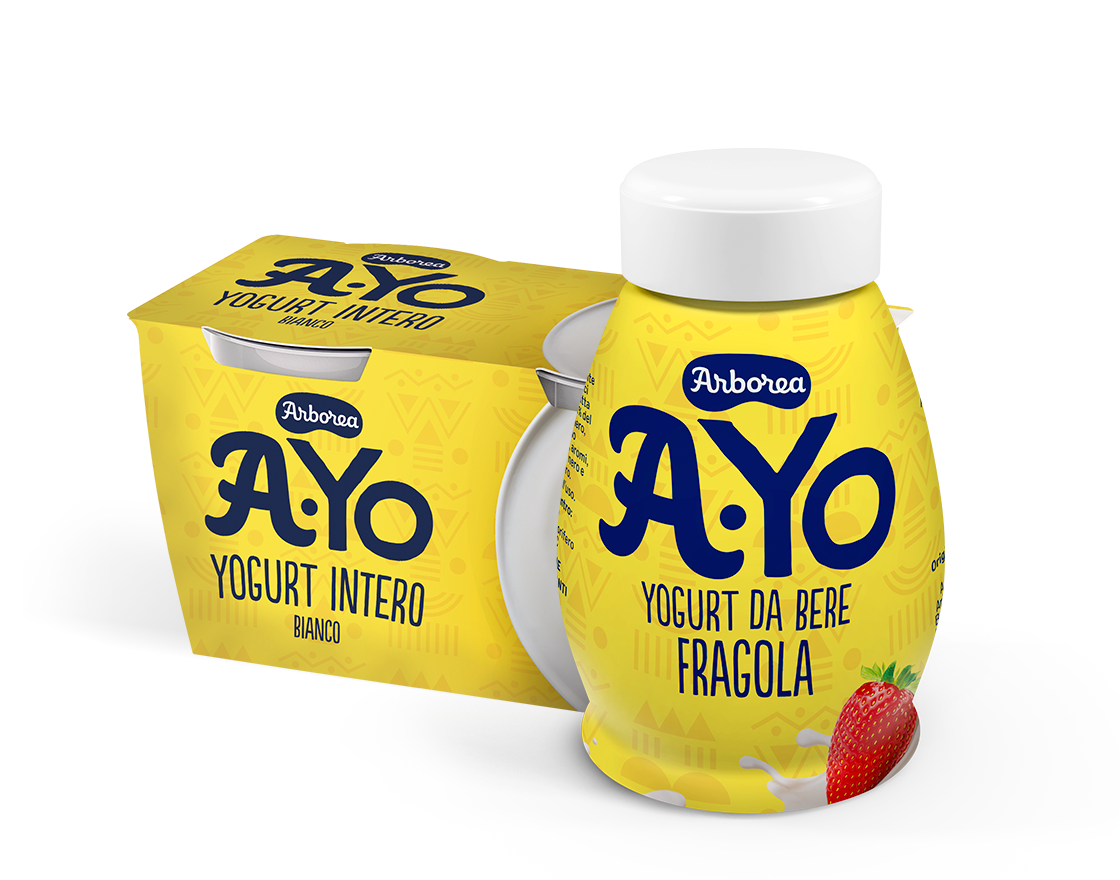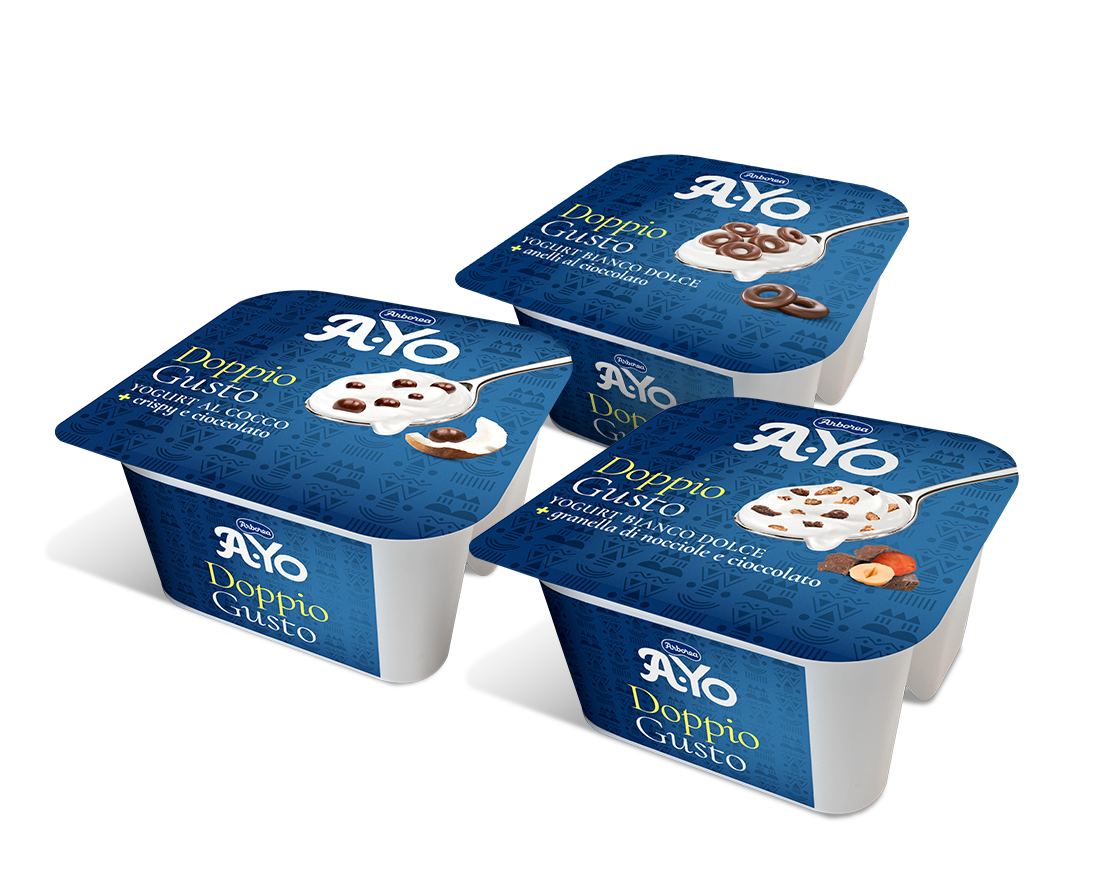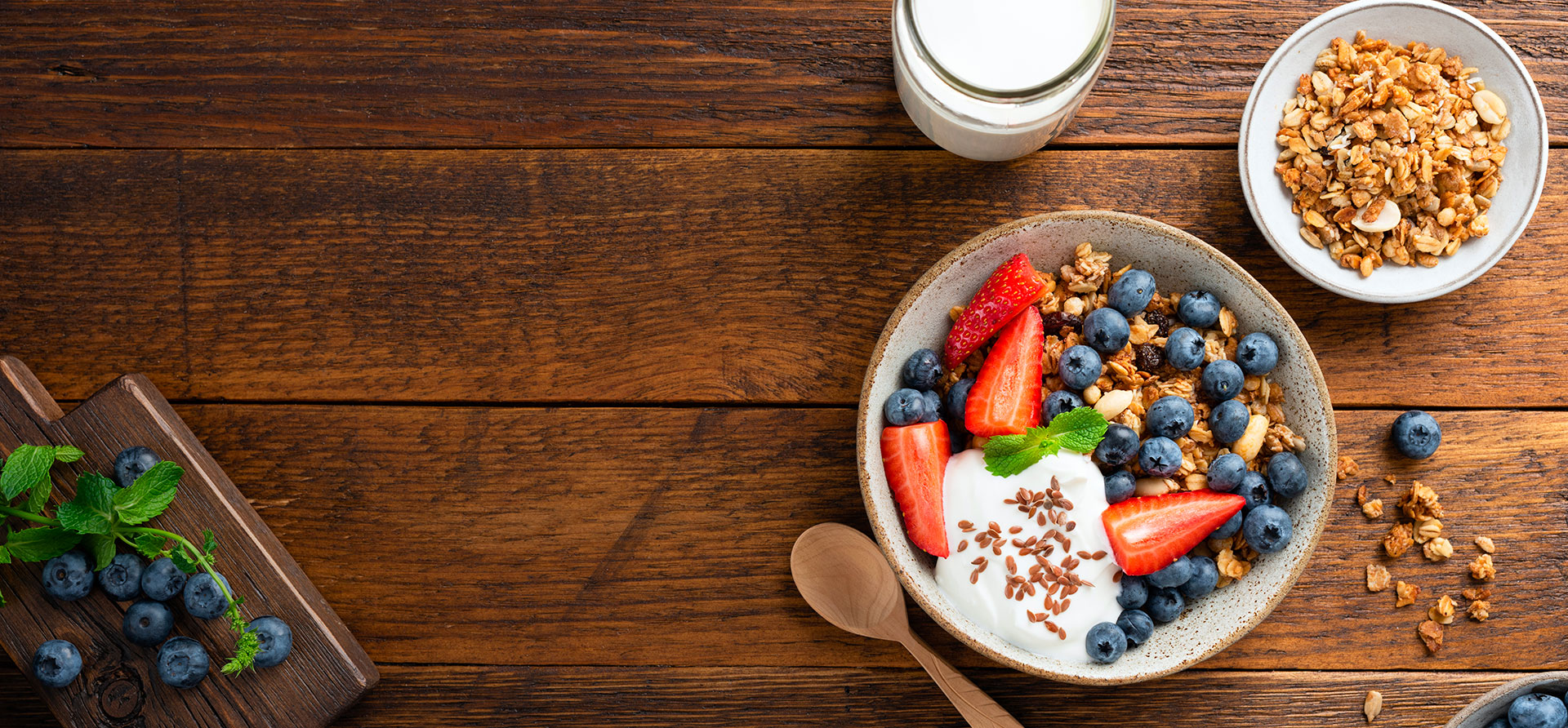
reading: 8 min
Everything you need to know about yogurt protein
Yogurt: What it is and what its benefits are
Yogurt is a food known since ancient times, derived from the fermentation of milk by certain bacteria belonging to the Lactobacillus and Streptococcus genera. As a food derived from milk, it falls into the category of dairy products . Yogurt is loved by adults and children alike for its fresh, creamy flavor and its great versatility , which make it ideal at different times of the day: added to cereal or oats for breakfast or accompanied by fresh or dried fruit as a snack, but also as a light and healthy dessert .
What are the benefits of yogurt ?
It’s a very healthy food for our body: remember that the Mediterranean Diet recommends consuming one to two servings of dairy products per day. This is because yogurt is a source of important nutrients , such as calcium, vitamins, phosphorus, and potassium. It is therefore highly beneficial for bone and dental health; thanks to its lactic acid bacteria content, it is essential for balancing intestinal bacterial flora. Yogurt has a moderate calorie content , making it suitable for those following a weight-loss diet, and it is rich in vitamin A and B vitamins. Yogurt is also an excellent source of protein : we’ll discuss this in more detail in the following section.
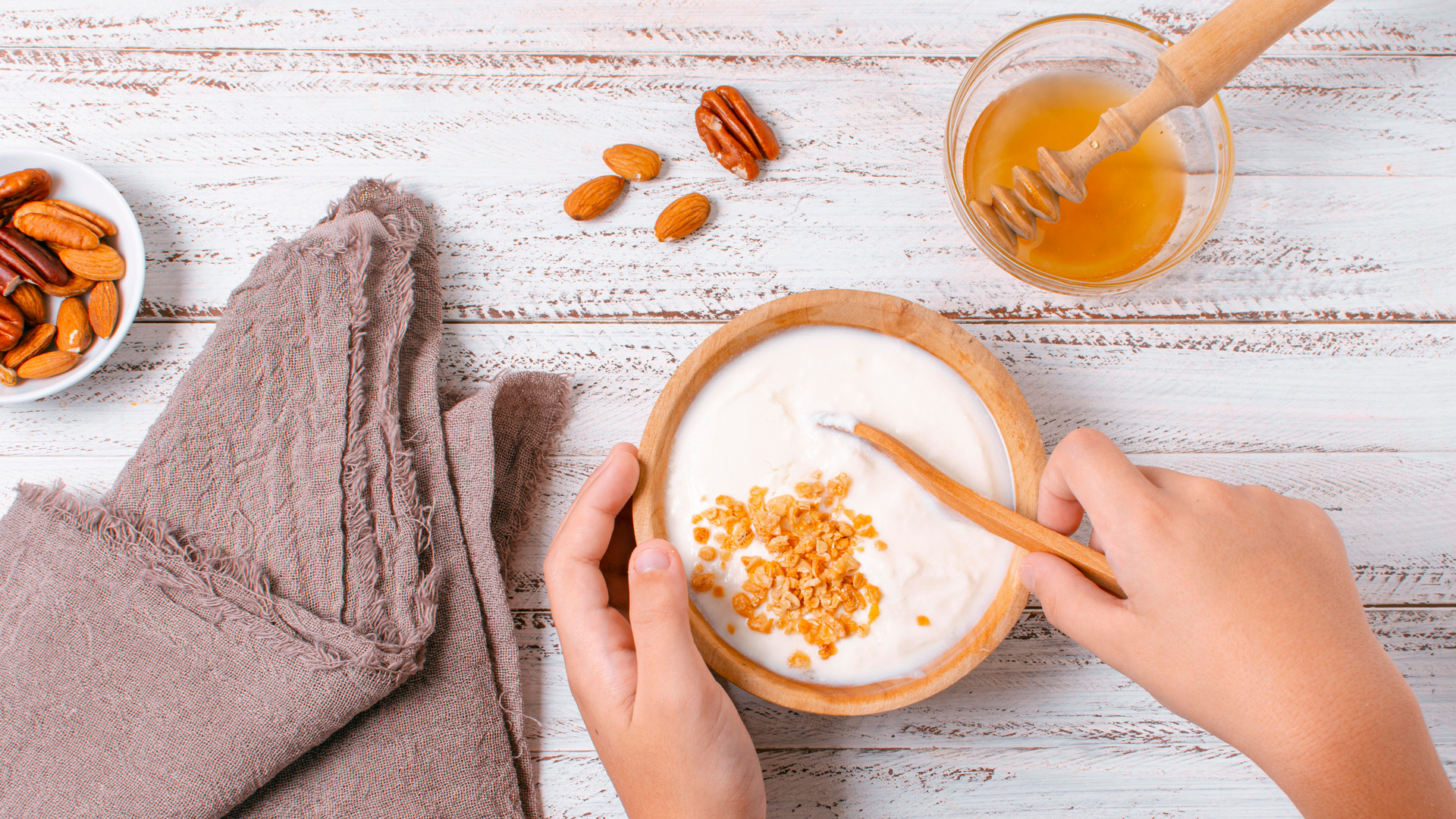

Proteins: what they are and what they are used for
Proteins are a large group of organic compounds, consisting of long chains of amino acids linked together by peptide bonds. These chains can assume different three-dimensional conformations in space based on the interactions between the different amino acids. This conformation is essential for the biological function of the various proteins, which can be of various types. Let’s look at them in more detail.

The “building blocks” of our body
Along with carbohydrates and fats, proteins belong to the category of so-called macronutrients and are essential for tissue development. One of the main functions of proteins, in fact, is structural : think of them as the building blocks of our bodies. This is why they are so sought after by athletes and fitness enthusiasts: they are essential for muscle development as they are the main constituent of muscle.

The functions of proteins
Proteins not only have a structural role but also play an essential role in a large number of vital activities in our body, including DNA replication, strengthening the immune system , and transporting molecules within our body. The functions listed above, along with many others, involve protein molecules that we are accustomed to hearing called by other names: enzymes, antibodies, hemoglobin, etc.
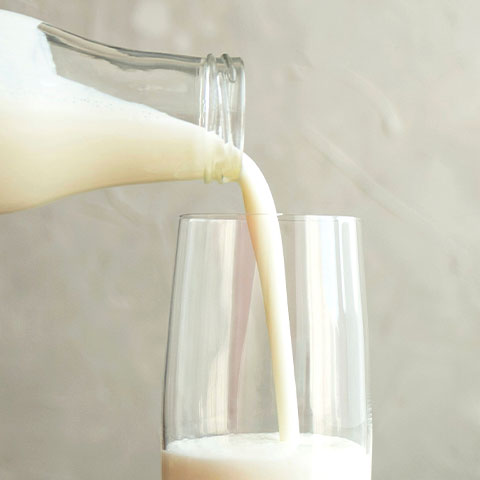
Whey protein
There are different types of proteins. In general, animal proteins have a higher biological value than plant proteins because they also contain essential amino acids, which our bodies cannot synthesize on their own and must obtain from outside sources. Among animal proteins, whey proteins are among the best, as they are highly absorbable . As with all nutrients ingested through food, proteins undergo a degradation process during digestion, breaking them down into their basic constituents, namely amino acids.
How many types of yogurt are there?
Not all yogurt is the same; there are different types depending on the milk used, the skimming, and any added ingredients. Each type has its own properties and organoleptic characteristics : let’s look at them in detail.
– Skimming. Yogurt can be differentiated depending on the degree of skimming of the milk used. Whole milk can be used for a fuller, higher-fat yogurt, or semi-skimmed milk for low-fat yogurt . There is also 0% fat yogurt , much loved by athletes and those watching their weight, generally made with skimmed milk.
– The type of milk. While it’s true that the most common milk on the market is cow ‘s milk, sheep’s and goat’s milk are also increasingly popular. These can be used to make delicious yogurts: light and digestible with goat’s milk, high-protein and delicate with sheep’s milk.
– Greek yogurt. Greek yogurt, also called strained yogurt , is a unique product that has gained popularity in recent years. The difference lies in the straining process , which drains off excess whey . This results in a thicker, higher-protein product.
Yogurt for every taste. Fruit, honey, coffee, or chocolate chip: there are countless delicious yogurt flavors available on the market. Especially those enriched with fruit , which can be either blended or cut into pieces, are particularly popular with both adults and children. If you opt for these, however, be careful to choose ones with no added sugar or with a limited sugar content.
– Lactose-free yogurt. Lactose is the sugar naturally present in milk, which our body breaks down into glucose and galactose to digest. Some people, however, are unable to break down lactose and therefore cannot digest it . For those who are lactose intolerant, there are highly digestible products on the market, made with lactose-free milk.
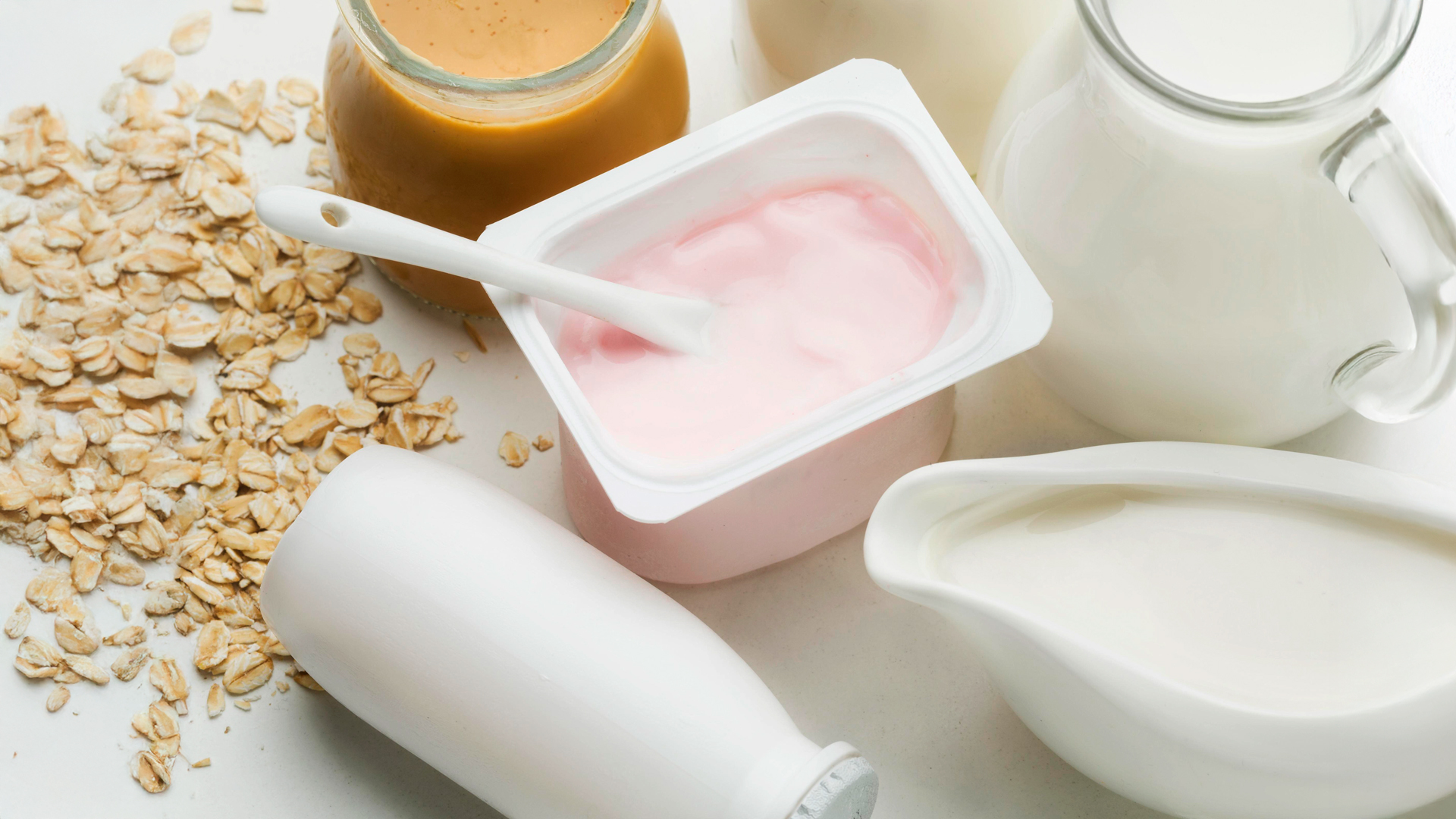

Which yogurt has the most protein and when should you eat it?
If you’re a sports enthusiast, you’ll know that cooking plays a vital role in physical well-being and muscle development . When planning your daily diet , you absolutely must consider not only your calorie intake, but also the amount of protein you consume. Here are some tips for a healthy, natural diet that provides all the energy you need.
If lactose makes your digestion difficult, you can opt for lactose-free yogurt. Choose goat ‘s milk yogurt instead for a lighter, more digestible product. Always check the label for lactose content. What about regular plain yogurt ? Full-fat yogurt contains about 3.7 g of protein per 100 g, while low-fat yogurt contains about 3.3 g.
If your goal is muscle building, full-fat sheep’s milk yogurt is a precious ally. With a whopping 4.9 grams of protein per 100 grams, sheep’s milk yogurt is the perfect nutritious and protein-rich snack before the gym. Even a small pot of Greek yogurt contains a comparable amount of protein to sheep’s milk yogurt.
There’s no right time to enjoy a good yogurt, or rather: any time is right ! An hour before physical activity for a perfect energy boost , or afterward for a protein boost; but also for breakfast , midday, or as a dessert to cool off on a hot summer day.





